Broken Axis:
Soviet Troops and Weapons
by Mike Bennighof, Ph.D.
January 2022
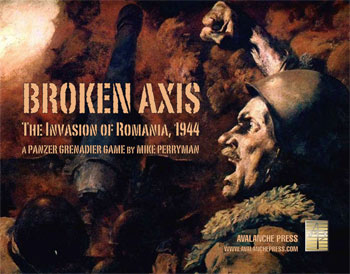 Powerful tanks and assault guns may have been the armored fist of the Red Army of Workers and Peasants, but its true muscle came from its infantry and supporting arms. Panzer Grenadier: Broken Axis is filled with Soviet tanks, as we covered in an earlier installment. You’ll need the infantry to take and hold ground, and support weapons to strengthen them. We’ll look at those today, from both the Guards formations and the regular Red Army of Workers and Peasants (RKKA). Powerful tanks and assault guns may have been the armored fist of the Red Army of Workers and Peasants, but its true muscle came from its infantry and supporting arms. Panzer Grenadier: Broken Axis is filled with Soviet tanks, as we covered in an earlier installment. You’ll need the infantry to take and hold ground, and support weapons to strengthen them. We’ll look at those today, from both the Guards formations and the regular Red Army of Workers and Peasants (RKKA).
Foot Soldiers
 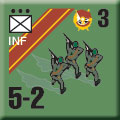  
The Red Army infantry platoon changed its organization throughout the war, though Panzer Grenadier has always represented it with the same piece – in game terms, the changes in practice weren’t enough to warrant different strengths.
On paper, the rifle platoon of 1944 numbered 34 men, in three squads of 11 each plus a platoon commander. The Red Army platoon had none of the extra men that other armies normally detailed to assist the platoon commander – messengers, an assistant, stretcher bearers. The platoon commander did it all. Each squad had a light machine gun, with the rest of the men carrying the Red Army’s standard Mosin-Nagant M1891 bolt-action rifle.
Some number of riflemen were issued with submachine guns in place of the rifle, but this varied from unit to unit and probably remained small since dedicated submachine-armed companies also existed. Each rifle regiment on paper at least had a submachine-gun company in addition to its three rifle battalions (Guards Rifle regiments had two such companies). Tank brigades had a battalion of submachine-gun armed tank riders.
A Guards platoon followed the same organization, but was far more likely to have all of the weapons and soldiers specified on the table of organization, or shtat. Guards units also had a preferential allotment of junior officers and NCO’s. Rifle divisions were named Guards due to battlefield performance starting in September 1941 and continuing into late 1943; all members of the divisions became Guardsmen and kept that status even if they later transferred to a non-Guards unit. That mattered not only for prestige, but also for pay: Guardsmen received a higher rate than non-Guardsmen in the same slot.
Heavy Weapons
 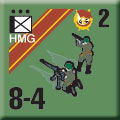 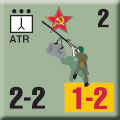 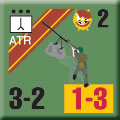
In 1944 the Red Army still relied on the M1910 Maxim as its primary machine gun, with every battalion having a company of three platoons, each serving three machine guns. The Maxim was a reliable weapon, looking very outdated on its small wheeled carriage with a splinter shield. The new SG-43 Guryonov heavy machine gun had started to replace the Maxim. This new gun kept the wheels and shield, but was a modern air-cooled design and also very heavy. The Guryonov was designed to be used, with a chromium-plated barrel intended to allow lengthy fire and a very high reliability.
The Germans still relied on a large array of lightly-armored vehicles – half-tracks and armored cars – so the Soviets still issued two models of 14.5mm anti-tank rifles to deal with them. An anti-tank rifle platoon had three squads, each with three anti-tank rifle teams. By 1944 each Soviet rifle battalion included one anti-tank rifle platoon, and each rifle regiment had an additional anti-tank rifle company of three such platoons. An anti-tank battalion included an anti-tank rifle company as well, but with only two platoons.
Mortars and Rockets
 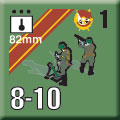 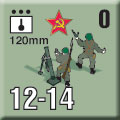 
The Red Army made extensive use of mortars; they required only a smooth metal tube rather than the hardened steel of a true artillery piece and so were enormously easier to manufacture. The BM37 82mm mortar was a copy of the French Brandt mle27/31 81.4mm weapon, and issued in huge numbers. By 1944 each Soviet rifle battalion had its own mortar company with a stunning total of nine tubes in three platoons each operating three mortars. A rifle battalion with its paper allotment – a rare thing, to be sure, but they did exist – wielded massive short-range indirect firepower.
The mortar’s big brother, the BM38 120mm, was likewise a copy of the Brandt model, in this case the mle35. Eventually more than 12,000 of them would be manufactured, as like the smaller mortar they required much less manufacturing capability than “real” artillery. Early in the great Patriotic War the 120mm mortar was pressed into use as a de facto artillery piece, serving in the artillery regiments of rifle divisions. By 1944 this crisis had passed for the most part and each rifle regiment had a company with seven 120mm mortars.
The Soviet 120mm made a profound impression on the enemies of the Proletariat, and both Germany and Romania produced their own copies of the weapon.
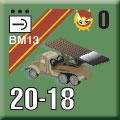 The Red Army received its first multiple rocket-launchers just after the start of the Great Patriotic War, deploying them for the first time in July 1941. Each Guards rifle division had a battery of BM-13 rocket launchers (the famed Katyusha) mounted on Zis-6 or American-made Studebaker trucks. Most launchers were concentrated in separate Guards Mortar Regiments and deployed to support offensives. While the rockets no longer caused mass panic among Axis troops, they remained very effective battlefield weapons. The Red Army received its first multiple rocket-launchers just after the start of the Great Patriotic War, deploying them for the first time in July 1941. Each Guards rifle division had a battery of BM-13 rocket launchers (the famed Katyusha) mounted on Zis-6 or American-made Studebaker trucks. Most launchers were concentrated in separate Guards Mortar Regiments and deployed to support offensives. While the rockets no longer caused mass panic among Axis troops, they remained very effective battlefield weapons.
Anti-Tank Guns and Artillery
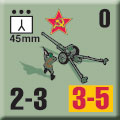   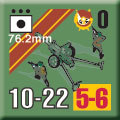
By 1944 the 45mm anti-tank gun could no longer destroy the most common German tanks. Even so, it remained in service. A new model introduced in 1942 featured a much longer barrel and therefore a higher muzzle velocity, but still remained nearly helpless against Panthers and Tigers. Even so, these were the weapons issued to the anti-tank platoons of rifle battalions and anti-tank batteries of rifle regiments.
Some divisional anti-tank battalions retained the 45mm gun, but others (Guards in particular) had received the more-capable 57mm Zis-2 anti-tank gun. This weapon had entered production in 1941, but was cancelled in favor of the cheaper 45mm weapon as it was not considered necessary. By 1943 it was considered necessary and production resumed, though it could only penetrate the thick hides of German heavy tanks at very close range.
More effective was the 76.2mm field gun, which equipped the light artillery battalions of rifle divisions but could often be found in an anti-tank role. Early in the war it had been capable of destroying any tank in the German inventory; by 1944 the big enemy tanks could often shrug off its anti-tank rounds.
And those are the Soviet infantry and support weapns found in Broken Axis. The pieces themselves are beautiful: silky-smooth and die-cut with minimal force, leaving them flush on both sides.
You can order Broken Axis right here.
Please allow an additional five weeks for delivery.
Sign up for our newsletter right here. Your info will never be sold or transferred; we'll just use it to update you on new games and new offers.
Mike Bennighof is president of Avalanche Press and holds a doctorate in history from Emory University. A Fulbright Scholar and NASA Journalist in Space finalist, he has published an unknowable number of books, games and articles on historical subjects.
He lives in Birmingham, Alabama with his wife, three children and his dog, Leopold.
Want to keep Daily Content free of third-party ads? You can send us some love (and cash) through this link right here.
|
